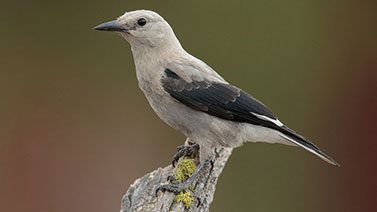The View From Sapsucker Woods: The Cornell Lab’s Centennial Year
By John W. Fitzpatrick
October 7, 2015

This centennial year at the Cornell Lab of Ornithology has been one of celebration and reflection, but also of action, generosity, and resolve. Our 100-year timeline reveals a lively chronology of people, their passions and creativity, and their service. We’ve come to appreciate our roots, the emergence of our unique dimensions, the coalescing of our mission, and the dramatic broadening of our scope from one remarkable man’s lab into the world-class institute we are today.
From his earliest days as a Cornell professor, Arthur Allen capitalized on the duality of birds as tools for research and scientific training, on the one hand, and for communication and inspiration on the other. This duality characterized the post-Allen period of the 1960s and ‘70s, and served as the foundation for crucial transformations of the Cornell Lab in the early 1980s orchestrated by Charlie Walcott. The range of scientific, educational, and conservation opportunities provided by this duality enticed me to accept the privilege and challenge of succeeding Charlie as the Lab’s director 20 years ago.
In 1962, Arthur Allen called his new ornithological journal The Living Bird to emphasize the Lab’s hallmarks: documenting the habits of free-living birds in their native habitats and sharing these discoveries with broad public audiences. This purposeful title distinguished Allen’s ornithological pursuits from those of the museum ornithologists who focused largely on preserved specimens, and had dominated American ornithology for 100 years. Indeed, moving to a new observatory in Sapsucker Woods provided some relief for Allen, who had shared the Cornell campus since 1953 with the brash and domineering, specimen-focused ornithologist Charles Sibley.
Opening our new building in 2003 completed a rapprochement of sorts for studies of ornithology and biodiversity at Cornell. As this Annual Report issue of Living Bird attests, discoveries by today’s students and research professionals at the Lab span a broad spectrum, from DNA-based revelations about the evolutionary tree-of-life to the effects of climate change, blister-rust, and pine bark beetles on the future of an entire ecosystem and its signature bird. Sophisticated analyses of eBird data reveal vivid new details about songbird migration pathways across the Western Hemisphere, and technical experts develop smartphone software for bird identification. We proudly continue the Allen–Kellogg tradition of using state-of-the-art media technology to broadcast important stories, from ecosystems at risk to gloriously visual environmental successes.
Our second century begins amid a world vastly different from the one in which the Cornell Lab was spawned. The earth’s human population is nearly 10 times larger, its climate is changing rapidly, and its biodiversity is declining almost everywhere. Such a world needs a place like the Lab more than ever, and during this final year of our Discover Campaign we have been blessed more than ever by thousands of financial supporters who agree with this premise. Through your generosity, we shall remain dedicated to both basic and applied research on organisms that represent the most accessible and charismatic indicators of function and health in natural systems. Our technical innovations will provide ever better ways to understand these systems and to share this knowledge broadly across human cultures. The Lab is not a sporting shop. Rather, it is about service to the natural world and to the idea that people all over the planet benefit by understanding nature and by living side by side with healthy wild ecosystems. Today, thanks to your generous and continuing support, we are stronger than ever, and we can begin our second century committed to scientific discovery, professional training, technical innovation, public engagement in science, inspirational communication, and conservation action. All of us at the Cornell Lab are privileged beyond words to live and work at such an exciting and meaningful place.


All About Birds is a free resource
Available for everyone,
funded by donors like you





